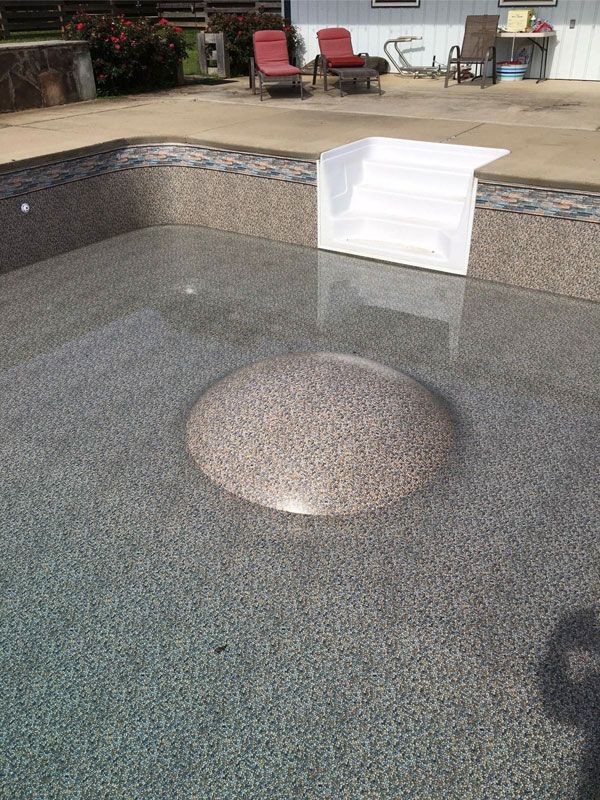The Tara Pool & Outdoor Products Blog
Fix A Floating Pool Liner
 This year we have not been able to catch a break from the rain. So far, it's been one of the wettest on record. That means many of us are dealing with flooding and high water tables which can easily lead to floating pool liners. When water builds up behind a liner it can lead to wrinkles, balloon shaped swelling or the liner coming loose from the track.
This year we have not been able to catch a break from the rain. So far, it's been one of the wettest on record. That means many of us are dealing with flooding and high water tables which can easily lead to floating pool liners. When water builds up behind a liner it can lead to wrinkles, balloon shaped swelling or the liner coming loose from the track.
Where is the Water Coming From
No matter how it appears, the first step to fixing water behind the liner is to figure out what's causing it. Water can find it's way behind the liner either by leaking out of the pool or from water in the ground surrounding the pool. Depending on where the water is coming from, you'll want to address that problem first. If the water is the result of a leak, then fixing the leak may solve the problem. However if the water is coming from outside the pool, it's probably going to require the water to be pumped from behind the liner.
Fixing a Floating Liner
If the float is severe, a hose can be placed behind the liner and the water removed using a transfer pump. You'll need a transfer pump, a stiff garden hose with the end cut off, some vaseline and a telepole. Pull a small section of the liner out of the track. Attach the hose to the transfer pump and feed the end with hose coupling removed behind the liner. If you coat it with Vaseline beforehand it will make removing it later, much easier. To get the hose in place, you can pump water out of the pool behind the liner while your pushing the hose down the back side. Once the hose is in place, reverse the water flow and pump the water from behind the liner and back into the pool. Be careful not to pump it out too fast. As the water is being drained, you can use a telescoping wall brush to float the liner back into position.
In most cases, when the water either recedes on its own or is evacuated by mechanical means, wrinkles will be evident. Once the water table has dissipated, and if the liner is within a couple of years old, the water level in the pool can be lowered and the wrinkles can possibly be worked out. Emphasis on POSSIBLY. The older the liner, the more brittle it is making it difficult to reposition or manipulate in any way.
Preventing a Floating Liner
As far as prevention, the best you can do is to keep the pool as near to full operating level as possible. This can be a delicate balance due to the rainfall accumulation in the pool causing it to overflow. Once the level of groundwater surpasses the water level in the pool, the liner is subject to float. This is one of the reasons you never want to drain a liner.
Pools with Ground Water Problems
In areas that are known to have a high water table, provisions can be made during initial construction to help keep the ground water away. Piping, with either holes or slots in the sides, can be installed vertically, down to a level close to the shallow end floor. A pump can be attached and the ground water can be pulled from the area adjacent to the pool and deposited a distance away. This piping can be retroactively installed, but takes some experience to complete.
When you subscribe to the blog, we will send you an e-mail when there are new updates on the site so you wouldn't miss them.